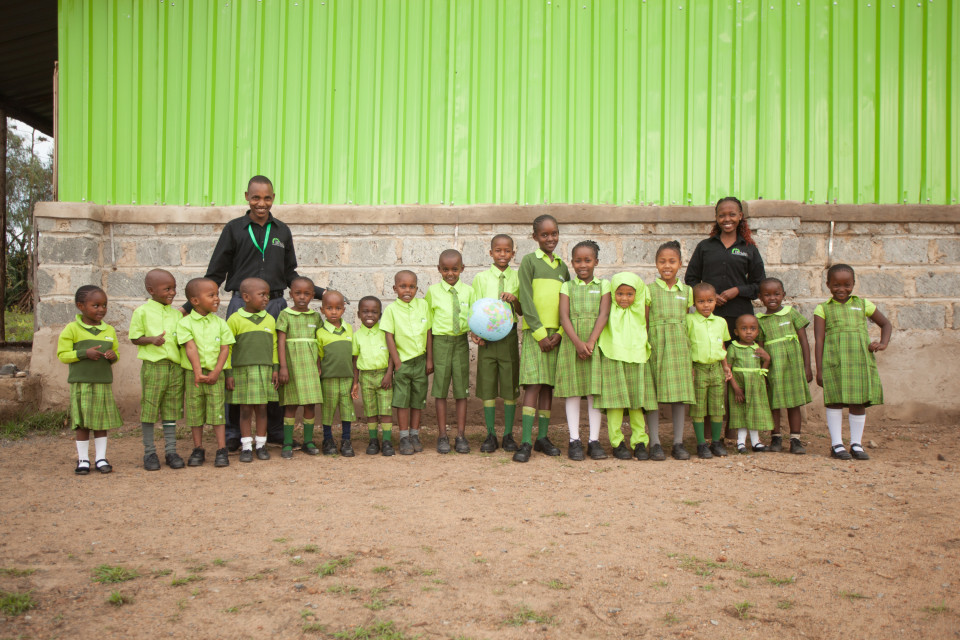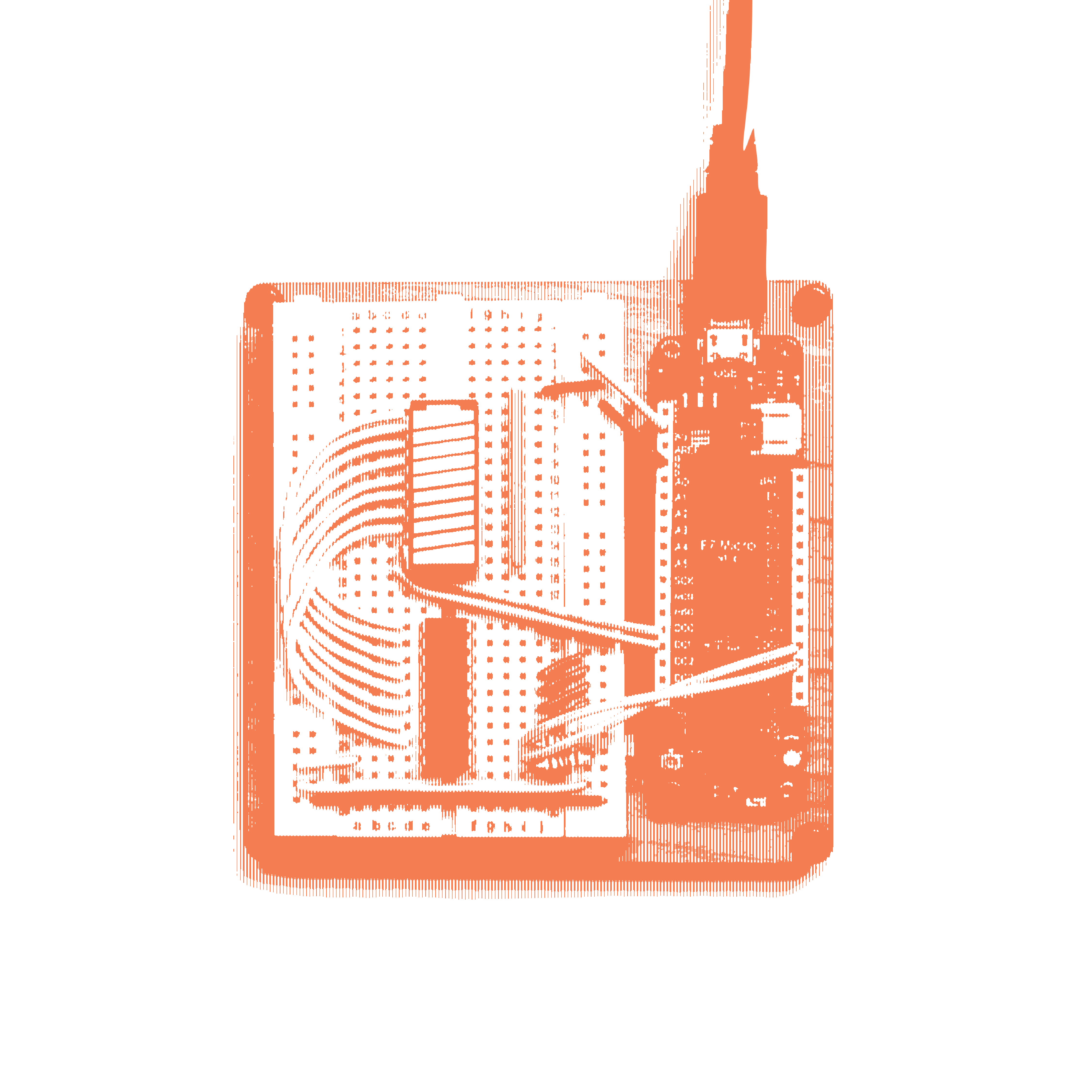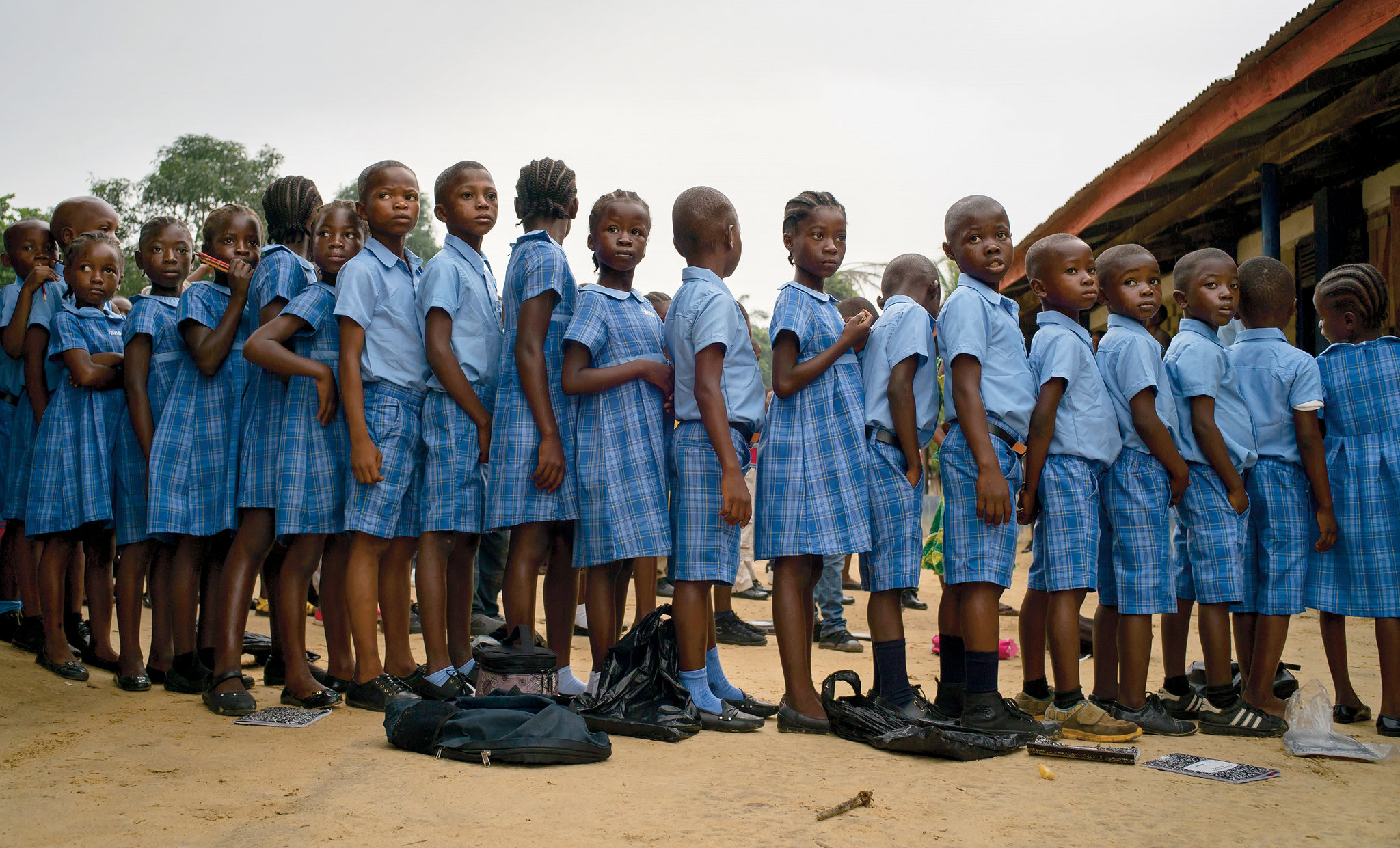
Last fall, when I visited Kawangware, a densely populated slum outside Nairobi, Kenya, the morning was bright, and a breeze provided a welcome respite from the smell of the open sewers that run like septic capillaries through the back streets and alleys. Extreme poverty makes life difficult here, and H.I.V. and waterborne illness are rife. Most homes are one-room corrugated-metal shacks that lack electricity, running water or indoor plumbing. It was an unlikely place to open a for-profit private school. But there, along a pitted road, stood an outpost of Bridge International Academies, an ambitious experiment in bringing market-based education to communities like this around the world.
Stepping inside the green-painted metal fencing, I ducked into one of two low, rectangular school buildings, which had been constructed from rough-hewed wood and sheets of bright green metal. From the hallway, one of Bridge’s founders, Shannon May, urged me to look through the chicken-wire windows. The dim, spare, well-swept classrooms had uneven concrete floors and no electric lights. Inside, a third-grade teacher was reading from a computer tablet, reciting a lesson script that had been transmitted from the Bridge headquarters in central Nairobi, a 45-minute drive away. The instructor quietly spoke the lesson as he wrote on the chalkboard, explaining the math symbols that indicate ‘‘greater than’’ or ‘‘less than.’’ Twenty-three third-grade students, all dressed in bright green Bridge uniforms, were doing their best to follow along. Because Bridge schools are standardized, May pointed out that the teachers were working from the same synchronized lesson guide that was being delivered in hundreds of Bridge’s schools in Kenya, allowing the company to ensure that students everywhere were receiving a uniform curriculum.
Bridge operates 405 schools in Kenya, educating children from preschool through eighth grade, for a fee of between $54 and $126 per year, depending on the location of the school. It was founded in 2007 by May and her husband, Jay Kimmelman, along with a friend, Phil Frei. From early on, the founders’ plans for the world’s poor were audacious. ‘‘An aggressive start-up company that could figure out how to profitably deliver education at a high quality for less than $5 a month could radically disrupt the status quo in education for these 700 million children and ultimately create what could be a billion-dollar new global education company,’’ Kimmelman said in 2014. Just as titans in Silicon Valley were remaking communication and commerce, Bridge founders promised to revolutionize primary-school education. ‘‘It’s the Tesla of education companies,’’ says Whitney Tilson, a Bridge investor and hedge-fund manager in New York who helped found Teach for America and is a vocal supporter of charter schools.
The Bridge concept — low-cost private schools for the world’s poorest children — has galvanized many of the Western investors and Silicon Valley moguls who learn about the project. Bill Gates, the Omidyar Network, the Chan Zuckerberg Initiative and the World Bank have all invested in the company; Pearson, the multinational textbook-and-assessment company, has done so through a venture-capital fund. Tilson talked about the company to Bill Ackman, the hedge-fund manager of Pershing Square, which ultimately invested $5.8 million through its foundation. By early 2015, Bridge had secured more than $100 million, according to The Wall Street Journal.
The fact that Bridge was a for-profit company gave pause to some NGOs that work in developing countries. But others reasoned that in the last decade, for-profit companies backed by what are called social-impact investors — people and institutions that make money by doing good — had successfully brought about important innovations, like solar-power initiatives and low-cost health clinics, in poor countries. Bridge’s model relied on similar investors but was even more ambitious in its dreams of scale. ‘‘There is a great demand for this,’’ May said in an M.I.T. video from 2016. Some of the company’s backers, she said, were ‘‘not social-impact investors,’’ continuing that ‘‘it was straight commercial capital who saw, ‘Wow, there are a couple billion people who don’t have anyone selling them what they want.’ ’’ For a 2010 case study on the company, Kimmelman told the Harvard Business School that return on investment could be 20 percent annually.
By 2015, Bridge was educating 100,000 students, and the founders claimed that they were providing a ‘‘world-class education’’ at ‘‘less than 30 percent’’ of what ‘‘the average developing country spends per child on primary education.’’ This would represent a remarkable achievement. None of the founders had traditional teaching experience. May had been an unpaid teacher at a school in China; Kimmelman worked with teachers and administrators developing an ed-tech company. How had they pulled it off? In interviews and speeches, they credited cutting-edge education technology and business strategies — the company monitors and stores a wide range of data on subjects including teacher absenteeism, student payment history and academic achievement — along with their concern for the well-being of the world’s poorest children. That potent mixture, they said, had allowed them to begin solving a complex and intractable problem: how to provide cheap, scalable, high-quality schooling for the most vulnerable, disadvantaged children on earth. Their achievement, they believed, could change the world — the subject line of a 2014 Bridge company email read, ‘‘What do Bill Gates, Steve Jobs, Jay Kimmelman and Shannon May have in common?’’ The next year, the venture capitalist Greg Mauro, who is a Bridge board member, told The Wall Street Journal that if all went as planned, the company would seek an initial public stock offering in 2017.
By 2016, in addition to the hundreds of Bridge schools open in Kenya, 63 were up and running in Uganda and 23 in Nigeria. (They would later open four schools in India.) In March of that year, the Liberian government decided that Bridge might be the key to overhauling the nation’s barely functioning education system, and officials there struck a deal with the company that handed over the operation of 50 primary schools, with the potential for letting them run many more in the future.
At the same time, Bridge was facing difficulties in the countries where it had been teaching the longest. In Kenya, enrollment was growing more slowly than the founders anticipated. A teachers’ union was mounting a vocal opposition. Some parts of the Kenyan government were cracking down, too. While Uber and Airbnb exploded in the gray areas in regulations that governed taxis and hotels, Bridge had trouble operating within the thicket of complicated, restrictive Kenyan education regulations. ‘‘Technically, we’re breaking the law,’’ May said in a 2013 article in TES, an education publication, ‘‘but so are thousands of other schools who are operating like this.’’ In February 2017, a high court in the Kenyan county Busia upheld a decision to close 10 of 12 Bridge schools; Bridge appealed, and the schools remained open. In Uganda, a similar dynamic was at play. A few months earlier, the high court issued an order for Bridge schools to be closed because government inspectors said that children were being taught in substandard facilities and unsanitary conditions. Bridge successfully appealed, and the schools remain open.
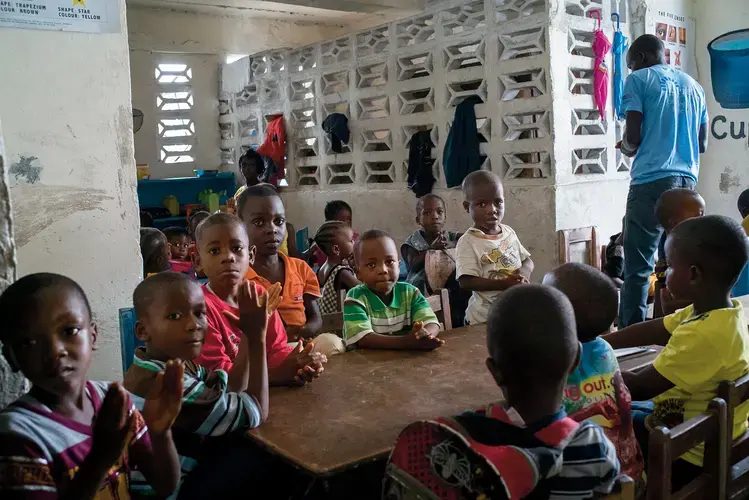
Rather than approaching profitability, the company was operating at a loss of $1 million a month. In March of this year, May went to London to provide testimony to Parliament as part of a series of hearings about the British government’s international-development efforts in education, including $4.4 million of British government funding for Bridge that had allowed them to expand to Nigeria. In April, the committee chairman issued an open letter to Britain’s secretary of state for international development saying no further investments should be made until there has been ‘‘clear, independent evidence that the schools produce positive learning outcomes for pupils’’ and that there were ‘‘serious questions about Bridge’s relationships with governments, transparency and sustainability.’’ Those questions were echoes, perhaps, of the same question that Bridge skeptics had asked from the beginning: Even if its big dream made sense in theory, could it actually work amid the complicated political forces and brutal poverty of the nations whose children were most in need?
The first inklings of the idea behind Bridge came to May and Kimmelman in 2005. They were in their late 20s and living in Huangbaiyu, a village in northeast China where May was doing her doctoral work in anthropology, and they began to do research on the profound effects of educational failure in poor communities. ‘‘Heads of households who didn’t graduate from primary school literally had houses made of shoddier materials than those who did,’’ Kimmelman recalled in a phone interview late last fall about one example that struck him, a hint of his Long Island childhood in his accent. ‘‘You could see the effect that education has on human potential in front of your eyes.’’ May, who is an Arizona native, and Kimmelman graduated from Harvard and met at their five-year reunion in 2004. By then, Kimmelman, who favors open-collared shirts and thick black glasses, had founded a software company that he said generated revenue of $20 million the year he sold it to the educational publisher Houghton Mifflin. At the time, there was increasing interest in investments in educational technology, and he soon began to wonder if he might figure out a start-up idea that could provide an educational solution that could transform lives, not just in the village of Huangbaiyu but for a generation of poor children all over the world.
May and Kimmelman married, and in 2007 they went on an extended honeymoon in Africa, where they met up with Frei, Kimmelman’s former roommate, who previously worked at the Bay Area design and consulting firm IDEO and was working for an agricultural nonprofit in Malawi. Together the three of them came up with a plan, which eventually evolved into an idea for a vast chain of replicable schools, their growth powered by small tuition payments from working parents — fruit sellers, night watchmen and washerwomen. They’d keep costs affordable by training instructors (many of them uncertified) to deliver a scripted curriculum and by using inexpensive building materials in the construction of their schools.
The upfront costs of developing Bridge’s software and data-collection system were daunting. Acquiring land was costly, too. Raising enough money early on was vital. ‘‘Jay’s success as an ed-tech entrepreneur opened doors’’ in Silicon Valley, says Frei, who left the company in 2013. According to an unpublished 2014 Stanford Graduate School of Business case study that Bridge provided, profitability would depend on achieving scale very quickly. By 2016, they planned to enroll more than 750,000 students, at which point they would be breaking even. By 2022, they estimated that they would educate 4.1 million students and generate $470 million in revenue.
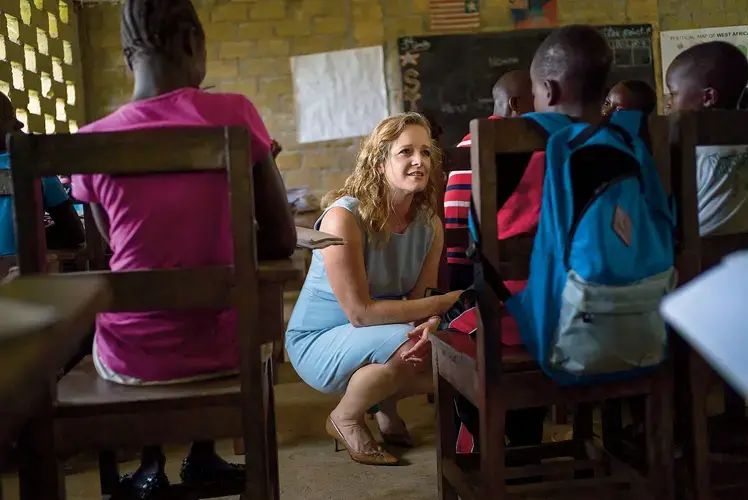
The company’s pitch was tailor-made for the new generation of tech-industry philanthropists, who are impatient to solve the world’s problems and who see unleashing the free market as the best way to create enduring social change. Investors were impressed by Kimmelman and the audacity of their plan. The idea of doing ‘‘high quality at low cost was really interesting,’’ says Kevin Starr, managing director of the Mulago Foundation, which eventually provided Bridge with $1 million in grant money and introduced a handful of tech moguls to Bridge. ‘‘We knew he had a track record as an entrepreneur. He could execute.’’
The founders decided to build their headquarters in Nairobi, and they opened their first school there in 2009. Long known as the Green City in the Sun, Kenya’s capital had begun to reimagine itself as the tech capital of East Africa; newly formed telecommunications companies were placing cheap mobile phones in the hands of millions of farmers, merchants and low-wage workers, and mobile banking quickly followed. The public-education system, though, was not keeping pace. In 2003, the Kenyan government officially abolished fees for public primary education but afterward found itself unable to construct enough schools for the poor children who tried to enroll. Public schools, which receive money from the government for teachers’ salaries and building maintenance, still charge parents small amounts to cover costs like classroom supplies and firewood. The schools’ quality varies, but in some, reading materials, textbooks and even chalk can be in short supply. All public-school teachers are certified. Teacher absenteeism is widespread. According to a 2007 World Bank report, 30 percent of teachers in one region in Kenya fail to show up on any given school day. Learning levels for children are low: 70 percent of third graders cannot do second-grade work. And while some catch up, many don’t.
Wealthy Kenyans and foreigners send their children to private schools, which are taught in English and enjoy lavish resources. The working poor often opt to send their children to parochial or local private schools, known as informal schools, that take no money from the government but charge fees that are slightly higher than public schools’. Some provide a basic education, but many do not. Sixteen percent of Kenya’s poor school-age children do not attend any school because their parents can’t afford even the smallest school payments. All Kenyan schools are required to teach the precisely prescribed national curriculum, which is taught in Kiswahili and English and mastery of which is measured by an eighth-grade test called the K.C.P.E. Obtaining a high grade on the K.C.P.E., which is seen as a sign of a child’s industriousness, intelligence and moral rectitude, means a student may continue on to high school.
At the start, the Bridge founders quickly learned that Kenyan parents did not necessarily see Bridge schools as a better option. ‘‘When the first academies opened, our mentality was a bit like, ‘If we build it, they will come,’ ’’ said Marie Leznicki, then Bridge’s vice president of brand strategy, in the Stanford case study. The case study authors explain that one challenge for the company was that parents were largely illiterate and therefore saw little difference among schools. But some academics who have studied the for-profit, low-fee chain say that some poor Kenyan parents were wary of the model. Sending a child to Bridge was more expensive than the village public school, though less expensive than some informal schools. The poorest families simply couldn’t afford the tuition and additional payments that Bridge required. ‘‘They have to pay enrollment fees, they have to pay for uniforms, they have to pay for lunch,’’ says Christopher Kirchgasler, a former charter-school teacher in the United States who spent 10 months studying Bridge schools in Nairobi and Nyeri County, north of Nairobi, for his doctoral dissertation. ‘‘For us, a matter of a few dollars is nothing, but for these very poor families, it can be a monumental obstacle.’’
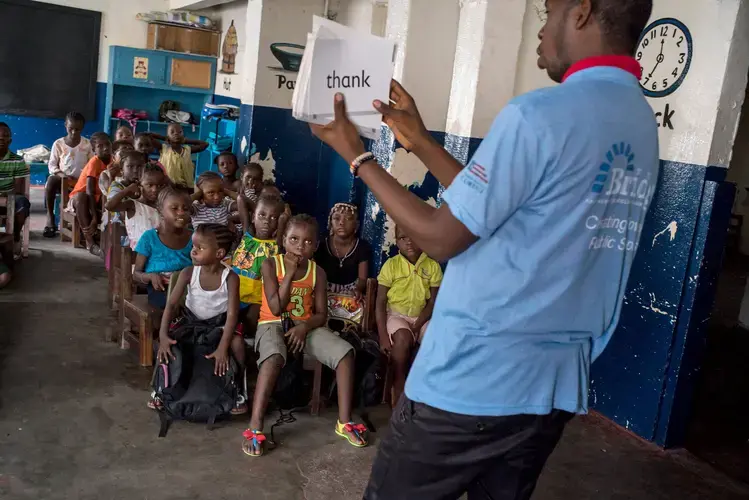
For many who did enroll, Bridge’s strict payment system quickly became onerous. Bridge’s business in Kenya depends on most parents making routine electronic payments by mobile phone. But slum-dwelling parents in Kenya are mostly occasional workers who rarely have a predictable income. In informal settlements around Nairobi, I visited 10 or so parents in their homes who explained the fragile finances of their lives. A sick child, an uptick in the price of corn meal or even a prolonged rainstorm can throw a family on the margins into an economic crisis. In most informal and public schools, payment terms are flexible, and the subject of protracted negotiation. Bridge says that it works with families to meet their needs. But many people told me that the school sends children home if fees are not paid.
‘‘They tell you, ‘Sit at home with your child until you get the money,’ ’’ says one parent, a vegetable seller married to an unemployed welder who has two children enrolled at a Bridge school in Nairobi’s Mathare slum. Another mother with a 9-year-old child says she found it difficult to make Bridge payments: ‘‘At times I’ve gone without eating so I can pay school fees.’’
Bridge executives say their schools depend on paying customers. ‘‘We get criticized for being bloodless capitalists,’’ Michael Conway, Bridge’s East Africa director of operations, told me when I met him in Nairobi last September, ‘‘but we know families make choices about who gets paid first. We don’t want to be the last vendor paid. If we become that, then our financial model would be difficult to sustain.’’
Bridge does not comment on the details of its financial performance, so neither May nor Kimmelman would say how many of Bridge’s Kenyan schools maintain enough enrollment to sustain their model. May says that Bridge currently has 80,000 students enrolled, down 10,000 from last year. ‘‘Before the campaign to attack Bridge began, the academies across Kenya were financially sustainable,’’ she says. Conway acknowledged that the situation on the ground made things complicated. ‘‘It is difficult to keep up enrollment and make the schools break even,’’ Conway said, ‘‘because the churn is so high.’’ He explained that in 2017, thousands of enrolled children were not paid up.
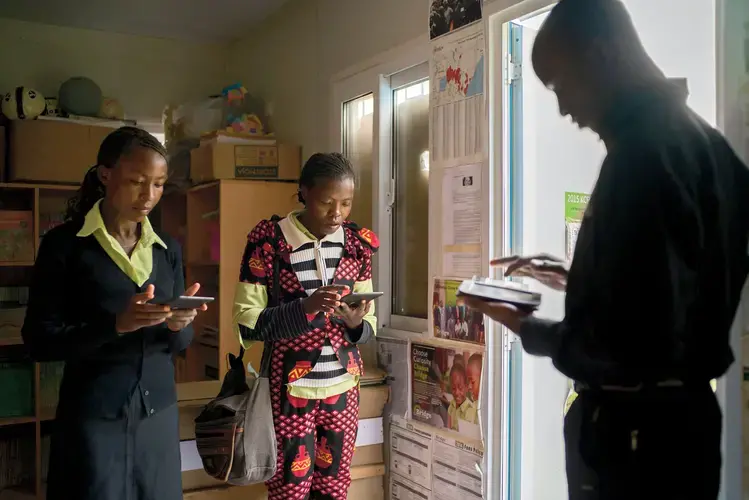
Some education experts say that Bridge’s plans for an international chain of low-fee, for-profit private schools rests on a flawed assumption. While such schools can work well for the relatively small number of families in poor communities who have salaries, says Keith Lewin, a professor emeritus of development and international education at the University of Sussex in Britain who has opposed the model, it is unrealistic to expect the most impoverished families to be able to pay. ‘‘People who engage in a discourse around making a vast number of the poorest people in Africa pay $6 every month for school tuition are people who have no idea what the lives of people living at or below the poverty line are actually like.’’
Inside the Bridge school in Kiserian, an hour’s drive from central Nairobi, students wore the same green uniforms and sat at attention behind the same rough wooden desks I saw in Kawangware. In front of a blackboard, a preschool teacher, Gladys Ngugi Nyambara, a thin woman also dressed in bright green, held a Bridge ‘‘teacher computer’’ that contained a recently downloaded lesson script on recognizing the ‘‘F’’ sound in common English words. Nyambara held up a picture of a fish and saw these words on the e-reader’s screen: What is this? (signal) Fish.
She gestured toward the class with the picture and delivered the line as precisely as she could. ‘‘What is this?’’ She snapped her fingers. ‘‘FEESSH.’’ She surveyed the 26 expectant faces in front of her. Her eyes went back to the script on the gray rectangular tablet. Listen. Say it the slow way. FISH. She followed the prompt. ‘‘Listen, class. This is a FEESSH.’’
There was a pause, and the teacher leaned over the e-reader. Our turn. Pupils say it the slow way. (signal) Fish. ‘‘Class, your turn.’’ She snapped her fingers again. ‘‘What is this? ’’

After some uncertainty over whether to use ‘‘this’’ or ‘‘that,’’ the children began to dutifully respond. ‘‘This is a FEEEESH.’’
Nyambara pressed on, repeating the call-and-response five more times. ‘‘This is a FEESH. Now class?’’ Snap. ‘‘This is a FEESH,’’ responded the children, their voices moving from uncertainty to singsong, pleased to be catching on.
The curriculum transmitted into classrooms is one of the company’s main selling points to investors, many of whom see the establishment of a standard curriculum delivered through technology as a solution to struggling schools. In 2013 the company began hiring United States charter-school teachers in Cambridge, Mass., to write Bridge lessons that were then loaded onto the e-reader in East African classrooms each day.
The challenge for the American writers was to meet the curriculum set by the Kenyan government while also trying to improve the outcomes. ‘‘We found that teachers in Kenya were used to lecturing at the front of the classroom, and children were passive — they weren’t asking or even formulating questions,’’ says Michael Goldstein, a charter-school founder who worked as chief academic officer at Bridge from 2013 to 2016. ‘‘So in our lesson scripts, we tried to get away from long periods of teachers talking. In a typical Bridge lesson, the teacher reads the explanation for about 10 minutes, he cold-calls a student to check for understanding, he gets students to talk among themselves or work in groups for 20 minutes as the teacher moved between desks. What we are going for is active classrooms — and this is something really different for the children we serve.’’ During 2016, Bridge’s curriculum team pushed to learn from their results so far, poring over 10,000 photographs of lesson books in Kenya to see evidence of what teaching techniques are working best.
The e-reader all but guarantees that every instructor, despite his or her education or preparation level, has a lesson script ready for every class — an important tool in regions where teachers have few resources. But scripts can be confining, some teachers told me. And in some of the 20 or so Bridge classrooms I observed, pupils occasionally asked questions, but Bridge instructors ignored them. Teachers say that they are required to read the day’s script as written or risk a reprimand or eventual termination, and they do not have time to entertain questions. Bridge says that ‘‘teachers are required to reference the day’s teachers’ guide and to diligently work to ensure all material is covered in each lesson.’’ Still, an alert teacher at the head of a class is its own victory. Although I saw a range of public-school classrooms, in one, the teacher was sound asleep, head on desk, in front of a classroom of 60 fidgeting fourth graders.
Bridge has writers in Nairobi who create the lessons that are in Kiswahili, but many lessons, to be delivered in English, are written in America. And it is challenging to develop lesson plans for teachers and children from a different culture. Misunderstandings can occur. Geordie Brackin, the company’s energetic director of innovation, guided me to a Bridge classroom where students were using flashcards and told me that when he goes to government schools he ‘‘doesn’t see flashcards, and our teachers don’t report using flashcards.’’
Brackin’s observation, though, was greeted with embarrassed smiles at local public and private schools a short walk away. ‘‘Of course, people who are trained teachers, we know about flashcards,’’ said Lilian Odhiambo, who runs a small private school in the Mathare slum. She steered me by the elbow into a classroom where a string hung with paper rectangles bisected the room. I watched as students reviewed English vocabulary words by looking up at one side of the rectangles, responding to them aloud, then stepping under the string to check their answer on the other side of the card. ‘‘We are a poor school, and paper is expensive,’’ Odhiambo explained. ‘‘In this way, we make flashcards work for all the children, not just one.’’
After eight years of operation, the impact of the Bridge curriculum on learning is uncertain. In 2015, Bridge publicly issued a working paper titled ‘‘The Bridge Effect,’’ its most recent evaluation. The study tracked 2,737 kindergarten, first- and second-grade students for the 2013-14 school year: one set enrolled in Bridge, and another, similar set of students enrolled at local public schools. The students were assessed at the beginning and end of the school year. There was a 43 percent increase in the number of Bridge kindergarten students who reached the ‘‘emergent’’ benchmark in English and a 40 percent increase in learning subtraction in math, compared with 22 percent and 15 percent increases for their public-school counterparts. The percentage increase of Bridge students who reached the ‘‘fluent’’ benchmark in English was high — among Bridge first graders it was 40 percent, compared with a 17 percent increase among first graders in public schools. Increases in the percentage of students who reached the ‘‘fluent’’ benchmark in addition and subtraction were smaller. The percentage increase of second graders who scored ‘‘fluent’’ in math skills was actually the same or higher in public schools than at Bridge.
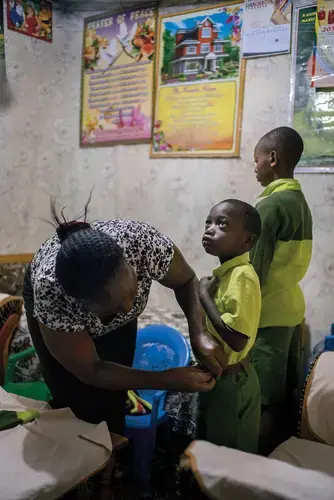
I asked two experts in statistics — Nat Malkus, from the American Enterprise Institute, and Bryan Graham, from the University of California, Berkeley — to help me evaluate the findings. “This is good evidence of positive effects,” says Maikus. Both pointed out that the study’s results are complicated by Bridge’s high dropout rate: While a third of public-school students dropped out, nearly half of Bridge students left during the study and were unable to take the final assessment. ‘‘The high attrition rate should give one pause,’’ Malkus says, ‘‘when considering the full effect of the program.’’ Graham, co-editor of The Review of Economics and Statistics, says that ‘‘organizations are under a lot of pressure to do these studies and ‘prove’ their program works. Reasonable and informed people could look at the information in that report and come to widely different conclusions about the effect of Bridge on academic achievement as they measure it. It’s information, just not especially actionable information.”
Another area of achievement that Bridge trumpets is the success of its students on the eighth-grade K.C.P.E. test. In 2015, according to Bridge, 63 percent of Bridge students who had been there for at least two years passed, compared with 49 percent of Kenyan students nationwide. But it’s unclear whether Bridge’s approach will be sustainable as the company grows. Former Bridge employees told me that in preparation for the 2015 exam, those on track to get a lower score were asked to repeat a year. The rest were taken to a residential cram school and prepped for the test by teachers who flew in from the United States.
To keep their classrooms filled, Bridge has always relied heavily on marketing. Bridge has advertised its bright green logo with its ‘‘Knowledge for All’’ tag line on posters, fliers, billboards and branded vests worn by motorcycle-taxi drivers. Confronted with lagging enrollment, Kimmelman and May brought on a data-analytics researcher, Josh Weinstein, who worked on an experiment in 2011 to find out how to attract more families to the schools. For one set of schools, Bridge did the usual marketing before opening. For the second set of school openings, Bridge did the marketing but also added an elaborate opening ceremony, complete with bouncy castle. The third set had the marketing and waived a month of school fees for every family. The fourth had the marketing, the opening ceremony and the waived fees. The impact of the bouncy castle and the waived fees, Weinstein wrote on his blog, was ‘‘amazing. Not only was initial enrollment nearly three times what we had experienced in the past,’’ but once the free month was over, ‘‘the conversion rate — the most important factor in measuring the efficacy of a marketing promotion in retail — was 85 percent. This is practically unheard-of in retail.’’ (Bridge says initial enrollment was two times what they had experienced with similar schools, and the conversion rate was 75 percent.)
The Bridge founders, Weinstein wrote, decided that every school opening thereafter would as soon as possible feature a ceremony and that every new student would be given a free month of school. Kirchgasler, who studied Bridge for his dissertation, pointed out that this often ended up putting parents in what could become a difficult situation. If a family found that they couldn’t make payments, say, in the middle of the term, it was often difficult to transfer a child to a new school. ‘‘Among the families I studied, moving a child to a new school was a gamble,’’ he said. ‘‘Public and informal schools were reluctant to take students back if their new school didn’t work out’’ — potentially leaving a child out of school and making it difficult for a parent to work.
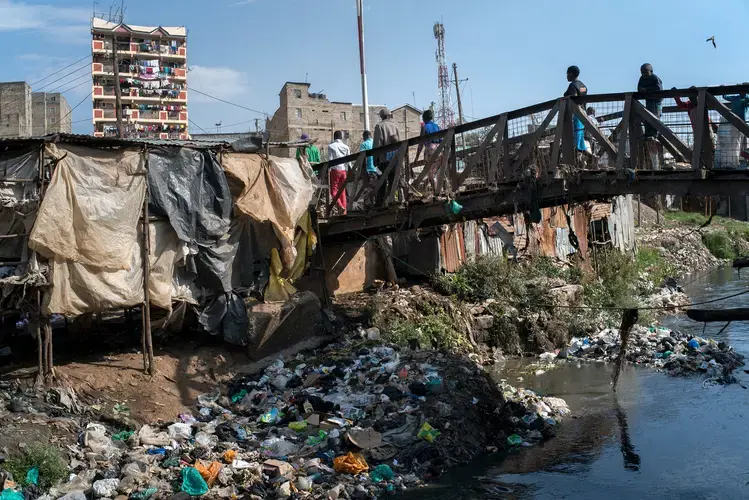
A former Bridge employee told me that the company’s own marketing could sometimes create bad feelings among the people they wanted to serve. ‘‘Many times, they would open a school and invite a local official to a grand-opening ceremony, and the local official took offense,’’ the former employee, who asked that her name not be used, says. The local officials ‘‘wanted to be engaged.’’ Another former employee told me that the free tuition was confusing to many of the poorest parents. ‘‘I believe the word ‘international,’ combined with foreign founders, led parents to expect higher quality than in other schools,’’ she says. ‘‘I believe they did become disillusioned. I believe many of them became disempowered when they wanted changes in their schools — like electricity, permanent structures — but that didn’t happen. They definitely missed the connectedness and mutually beneficial relationships that they would find in other schools.’’
Similar concerns were voiced by Salima Namusobya, executive director of the Initiative for Social and Economic Rights, a civil rights group in Kampala, Uganda, that, along with the union there, has campaigned against Bridge and other private-school operators. Far from educating poor children, she says, Bridge uses aggressive marketing to enroll children who are already in public schools. ‘‘The fact that they have the word ‘international’ in the school name, they think they’re getting an international curriculum.’’
May flatly rejects the notion that Bridge’s marketing could be misunderstood. ‘‘We try very hard to communicate clearly and transparently and if we knew about anything that led to confusion, we’d want to correct that,’’ she says.
In 2015, teachers’ unions stepped up their agitation against Bridge. The company, May says, was the victim of a smear campaign mounted by the union, and the company has faced hurdles because some government officials run their own schools. ‘‘They see Bridge as a threat,’’ she says. ‘‘They want to maintain the status quo.’’

While I was in Kenya, May introduced me to a group of parents who told me that they thought the school was providing their children with the best start in life. Livingston Kagasi, a lanky day laborer who donned a suit, a pressed shirt and a tie for the group interview, said that the local public school was an unappealing option for his son Rivival. Kagasi said that leaving a child in a dirty classroom with 80 others and a teacher who may show up late, or not at all, feels like ‘‘dumping your child’’ and ‘‘not preparing them for life.’’ Not long before, Kagasi’s wife got a job as a clerk in the government that came with a steady salary and transferred their son to Bridge. Elizabeth Mumo, another parent, told me she had high hopes for her two sons, Joshua and Samuel, who attend the Bridge school. In her tidy two-room cinder-block home, Mumo explained to me that when she wakes up in the morning, she offers a prayer of thanksgiving that God has allowed her husband, a livery-car conductor, to make enough money to pay for the cooking gas she needs to make the morning tea. She told me that sometimes money is tight but that she wants her children to go to Bridge. She likes the fact that the teachers and students speak in English. She pointed out that a handful of Bridge students have gone to private schools in the United States — an almost-unimaginable break for a slum-dweller, and a success story that Bridge markets to Kenyan parents. Mumo imagines her oldest son going to a university: ‘‘I can see Oxford.’’
Kenya has many high-school-educated, unskilled workers who are looking for jobs, and initially, Bridge’s low-cost model depended on that labor pool for staffing schools. Instructors receive three to six weeks of training on pedagogy, classroom management and education technology. They are paid between $95 and $116 a month, less than what public-school teachers make in Kenya but more than what teachers can often make in informal schools. Under pressure from the Kenyan government, Bridge began to employ more certified teachers, and the company now says that more than 50 percent of its instructors are certified. All instructors work from 7:10 a.m. to 5:20 p.m., with a shorter day on Saturday — longer hours than most Kenyan public-school teachers. Bridge teachers are encouraged to market Bridge to parents in the community.
Early on, the company found it difficult to retain instructors. The Stanford case study cited high teacher turnover in 2010. Bridge began requiring instructors to sign a two-year contract; if they broke it, they had to pay back the cost of their training. Teacher turnover slowed.
Bridge teachers are discouraged from talking to the press, and their contracts remind them that they may not speak on behalf of Bridge, but some agreed to talk to me provided they were not identified. A few said they were grateful for the job and happy to have a lesson script. Others expressed frustration about hoped-for bonuses that they never were able to achieve. Teachers can receive extra money if they maintain enrollment of at least 25 pupils per class. A middle-aged teacher who provides science instruction at a Bridge school told me she was encouraged to go to the market and try to enroll the children of the fruit sellers when her teaching day was done. But it was hard to recruit new students.
All the teachers I spoke to appreciated the regular paycheck. But they chafed at how they were managed, often by unseen bosses communicating with them via text or robocall. Some Bridge staff members described what they saw as a stark contrast between their hopes for Bridge and a grittier reality. One school administrator, an academy manager, described how the pressure to ensure that parents made their payments on time was disheartening. ‘‘I didn’t realize how hard it would be to talk to parents,’’ he said. ‘‘They’re ill, they’re out of work, they had a fire. No one is in the house who’s making any money. How can they pay when they have no money for food?’’ And working at Bridge, teachers said, can disrupt a career: Instructors are required to sign an employment agreement that includes a noncompete clause that prevents them from working at other nearby schools for a year after they leave.
In the public and informal Kenyan schools I visited, school administrators welcomed my impromptu drop-ins warmly, showed me their classrooms and introduced me to their teachers, who spoke frankly about their challenges. Bridge teachers and managers say that sort of openness is not allowed. At some Bridge schools I visited unescorted, staff members said that they would need to contact superiors if I didn’t leave.
One of these schools was Bridge Diamond in Mukuru, a slum of 600,000, just east of central Nairobi. The schoolyard fence was made of patched, bent gray metal and barbed wire. The school building itself was shabby and neglected. In the schoolyard, about 30 feet away from where children enter their classrooms, was a deep trench of fetid garbage and rotting bags of feces; when residents can’t use the communal latrines they use ‘‘flying toilets’’ — defecating in a plastic bag and throwing it as far as they can. The chicken-wire windows were rusted and ripped. Some classrooms were empty. One had 15 students sitting at desks but no teacher.
Staff members at Diamond were eager to show the poor conditions in their school but also urged me to leave quickly. Last summer, a University of Alberta doctoral candidate, Curtis Riep, was gathering enrollment information in Uganda for an international organization of teachers’ unions, which later put out a report on the number of children enrolled in Bridge in that country and the number of untrained teachers at the head of Bridge’s classrooms. He made unescorted visits to three of its schools near Kampala. The academy managers contacted company executives, and Riep was arrested by the Ugandan police, though the charges, criminal trespass and falsely identifying himself, were quickly dropped. Riep calls it ‘‘pure intimidation.’’ May says she simply acted responsibly because a stranger was at the school.
Last year, when the Liberian government began working with Bridge to operate 50 of its schools, it represented a new model for the company — running government-funded schools instead of competing with them. Under the plan, Liberian parents would not have to pay tuition to attend Bridge-run schools. Instead, the Liberian government would pay the salaries of Liberian-certified teachers, one of the biggest expenses associated with schooling, and provide Bridge with schoolhouses in which to hold classes. Bridge would use money raised for the project to pay the cost of running those schools. ‘‘Because parents don’t have to pay, it removes the morally troubling’’ process of removing children from class when their parents can’t come up with the money, says Tilson, the Bridge board observer, who acknowledges that he has never been in a Bridge school while it was in session.
Liberia’s education system, ravaged by civil war and then Ebola, was crumbling. Nevertheless, the government’s move faced resistance from those who bridled at the idea of a foreign company running Liberia’s schools. ‘‘An Africa First!’’ read one headline from Mail & Guardian Africa, a pan-African digital publication headquartered in Johannesburg. ‘‘Liberia Outsources Entire Education System to a Private American Firm. Why All Should Pay Attention.’’ After the outcry, the minister of education, George Werner, allowed seven other school operators to run schools in Liberia as well and reduced the number that Bridge managed to 25. A team of independent economists was hired to study the different models and advise Werner. Theoretically, the operators that showed solid teacher and pupil attendance and learning gains would be given contracts for more schools. But Bridge was impatient with that plan. Earlier this year, during heated meetings with Bridge investors and Werner, the funders asked the education minister to allow the company to run up to 250 more schools the following year. ‘‘We built a machine for scale,’’ says Kevin Starr, a Bridge investor who sat in on some of those meetings. ‘‘It’s going to have to operate at idle.’’
Since entering into the agreement, Bridge has moved formidable resources into Liberia. Justin Sandefur, an economist at the Center for Global Development in Washington and principal investigator in the Liberian schools study, told me recently that he worried that ‘‘there was no longer a governance firewall between the interests of a commercial company and the Ministry of Education, which is supposed to be advocating on what is best for Liberian children.’’ In April, Sandefur, along with seven others, published an open letter cautioning the Liberian government against rapid scaling and to consider a financially sustainable model. In June, Werner gave Bridge the go-ahead to operate dozens of new schools.
The new model of working with governments may allow the company to continue to expand, but it’s still an open question whether it can realize its dream of Silicon Valley-style growth, given the messy realities that are part of life in the poorest parts of the world. Greg Mauro, the Bridge board member, says that an I.P.O. is still two to four years away. May says the company may consider selling learning materials. They’ve been collecting data on schoolchildren and their families and might partner with microfinancing institutions to help Bridge parents get loans, as well as working as an intermediary for health-insurance plans. ‘‘While we are very focused on education, it’s hard to say where it might go,’’ she says. ‘‘We are looking for opportunities to help our families.’’

Education Resource
Meet the Journalist: Janelle Richards
Janelle Richards, a producer at NBC News, traveled to Kenya to report on the technology industry...
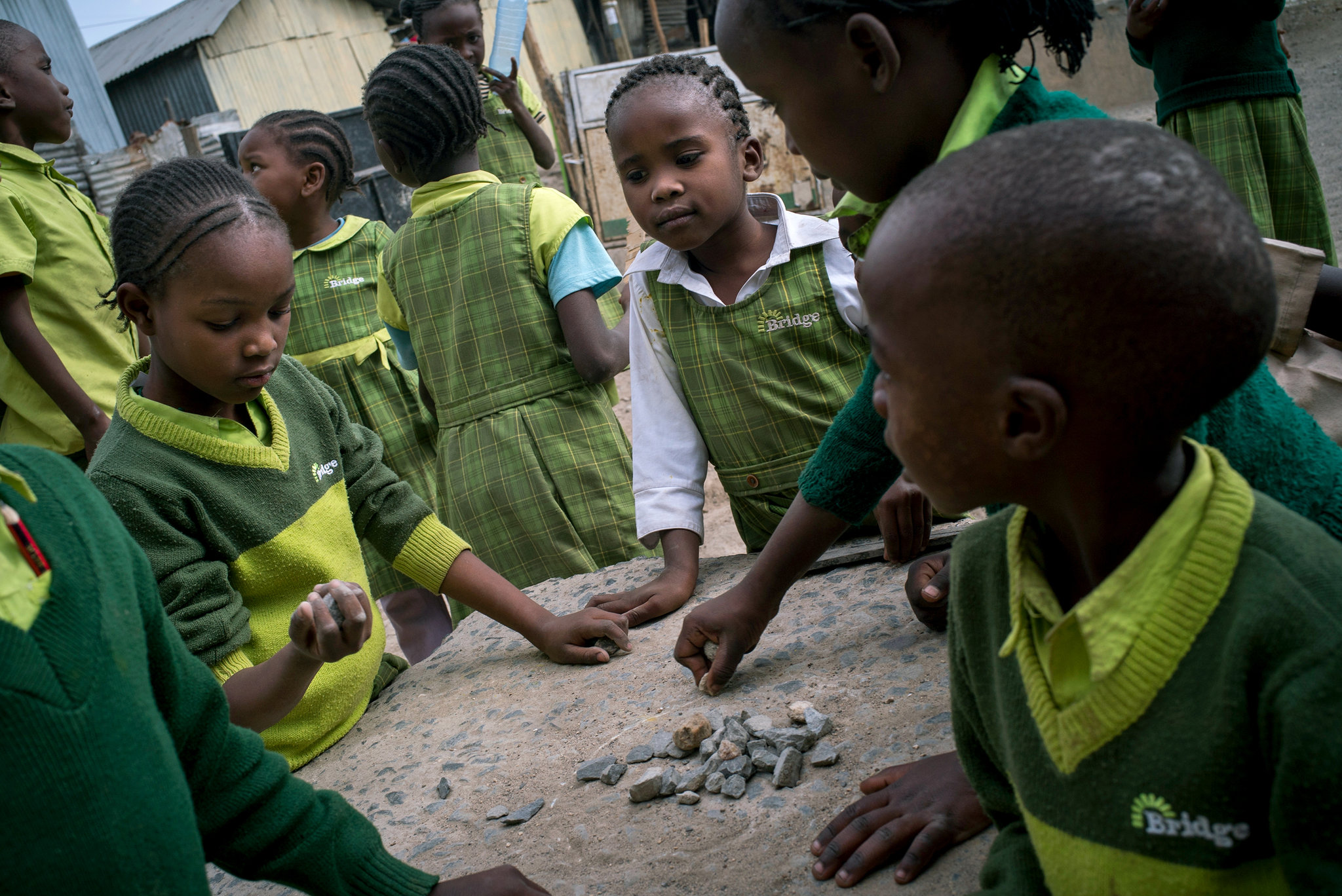
Education Resource
Meet the Journalist: Peg Tyre
Pulitzer Center grantee Peg Tyre reported from informal settlements around Nairobi and visited...


